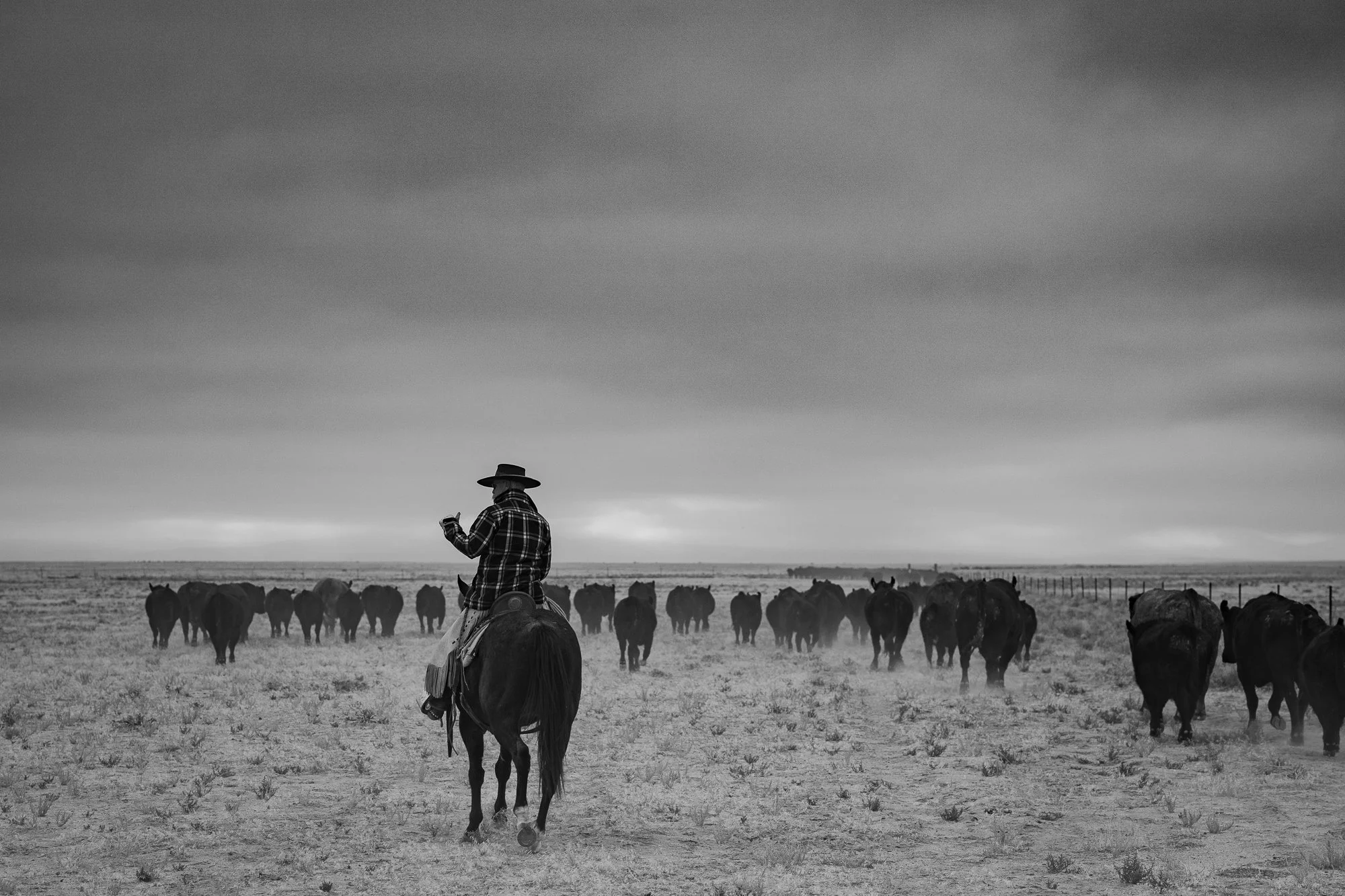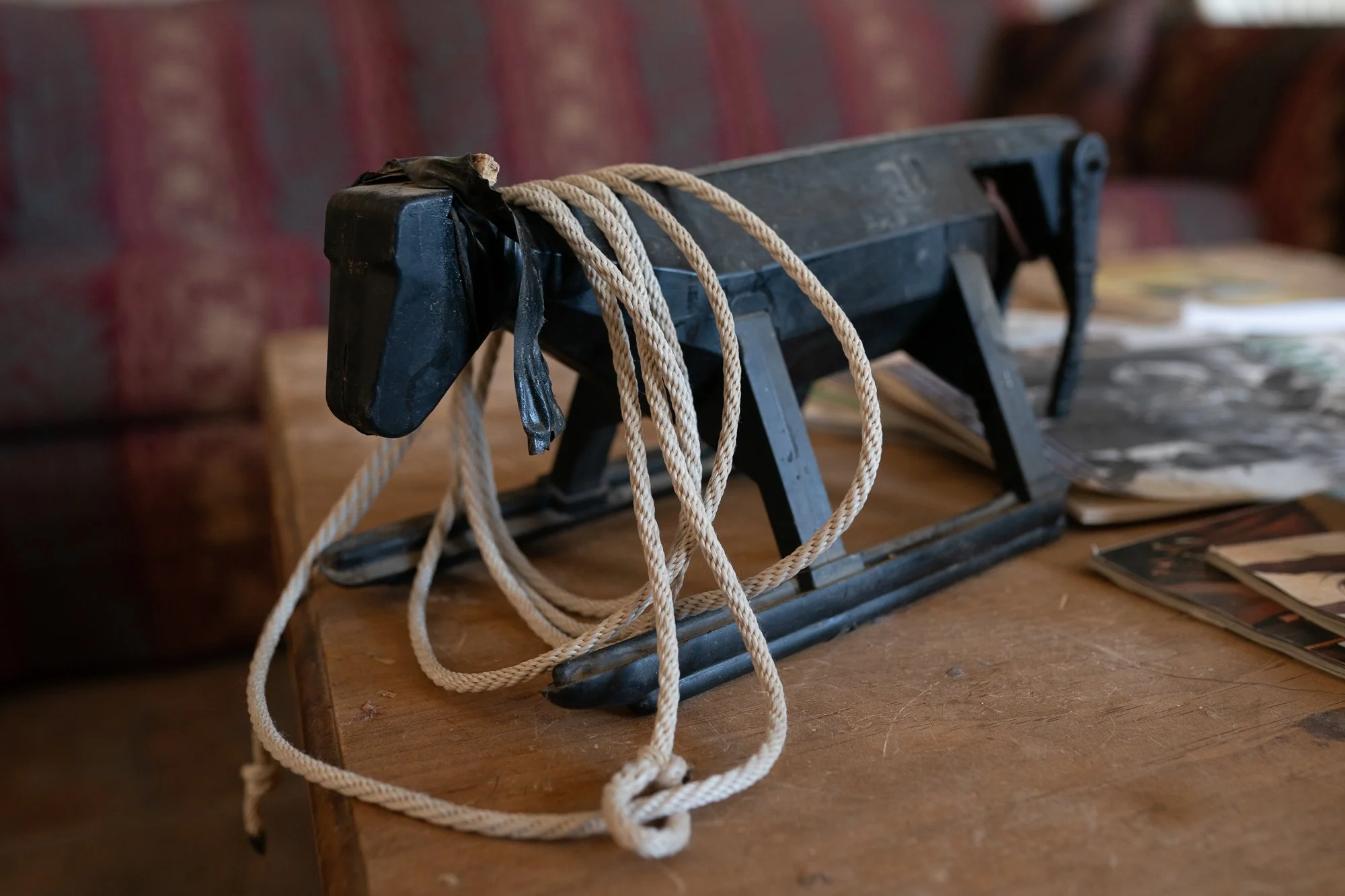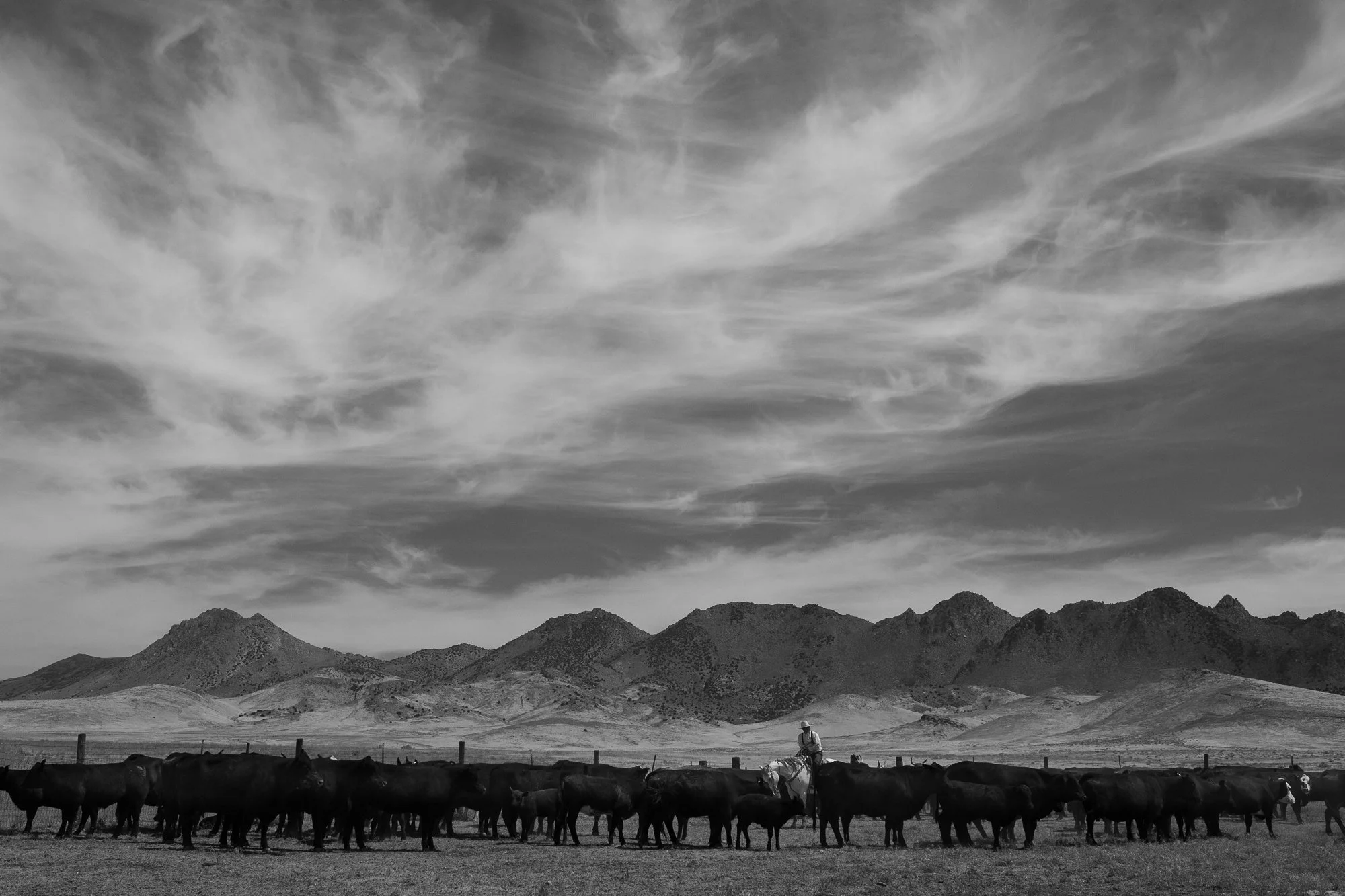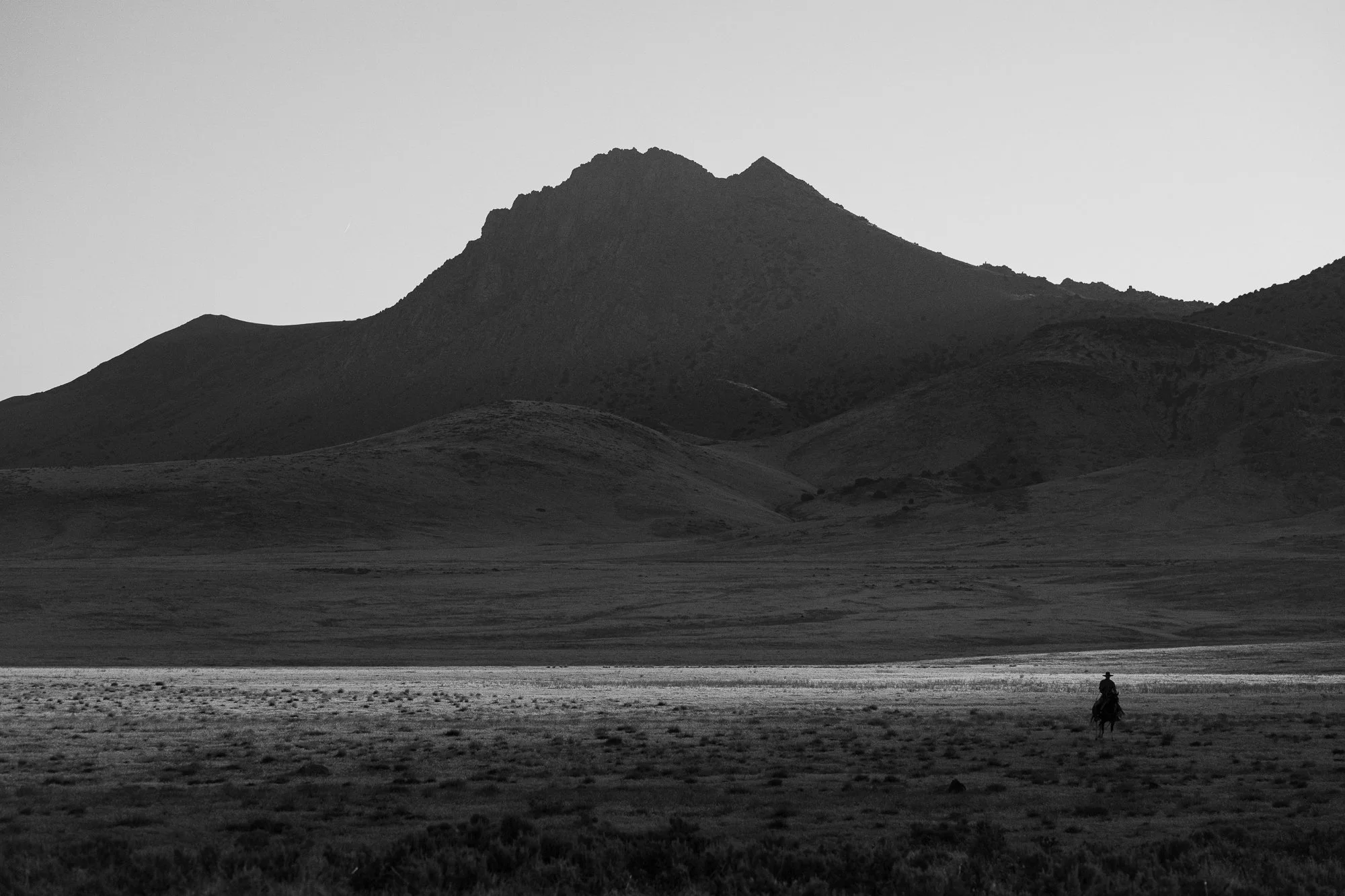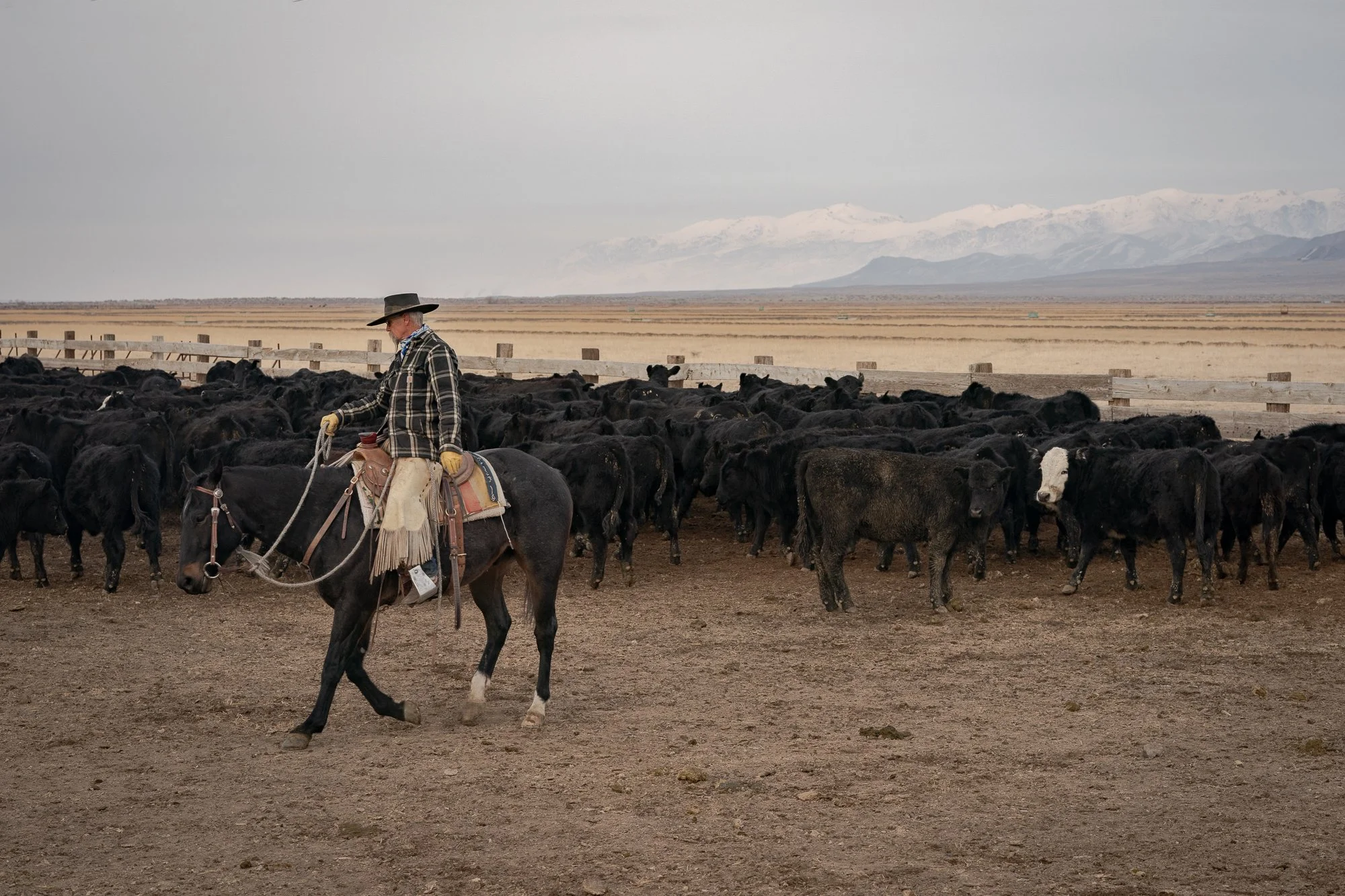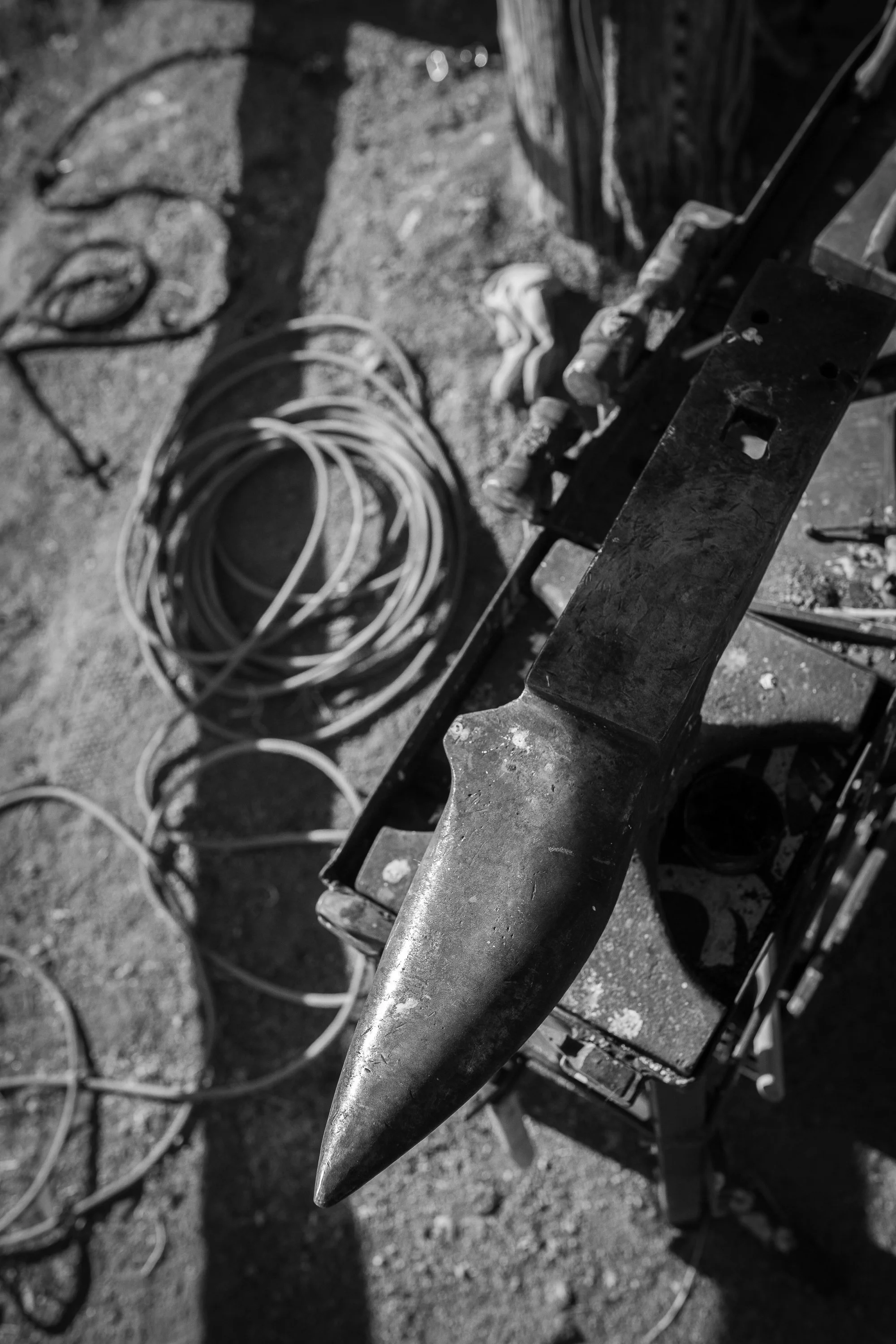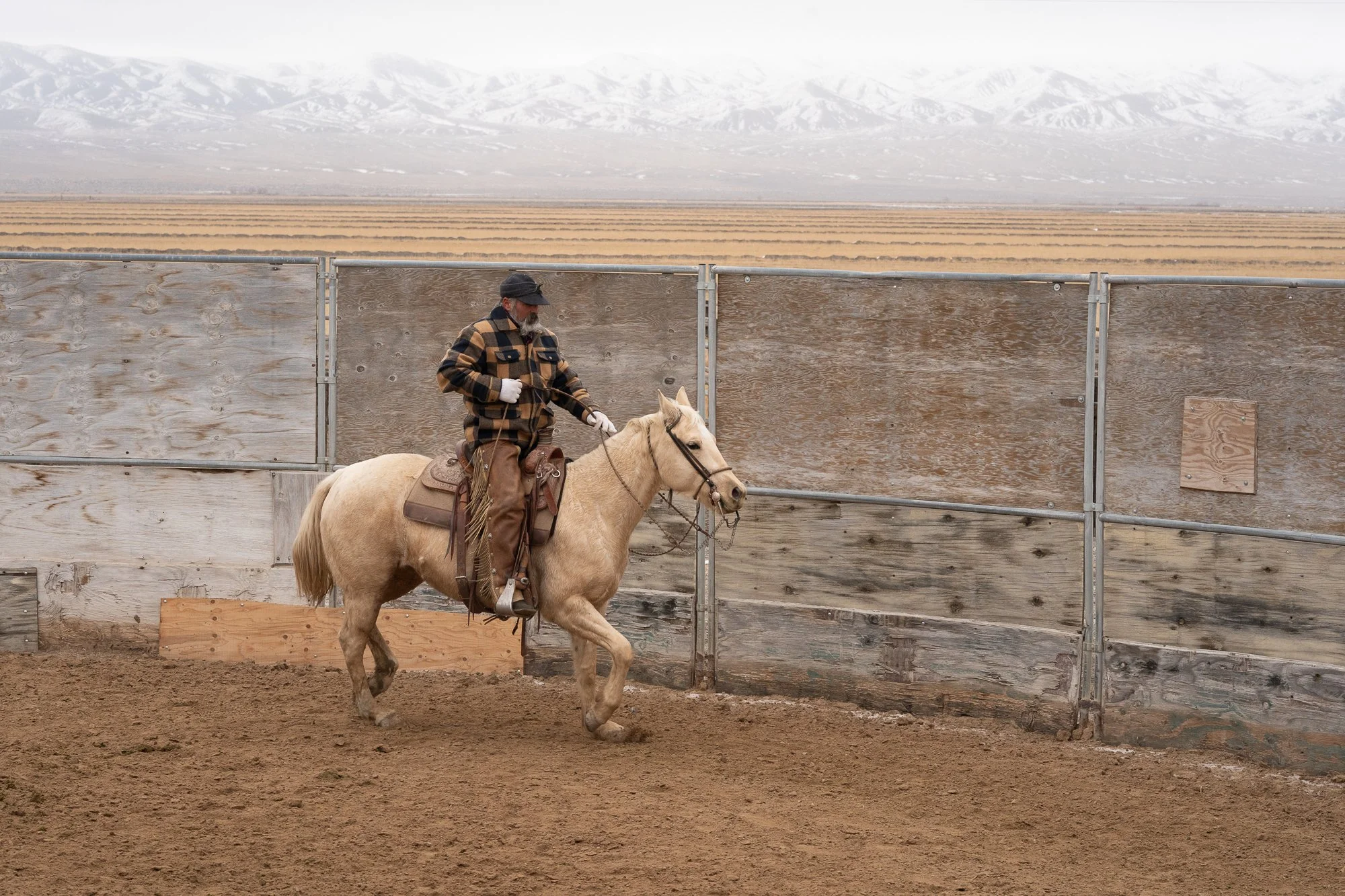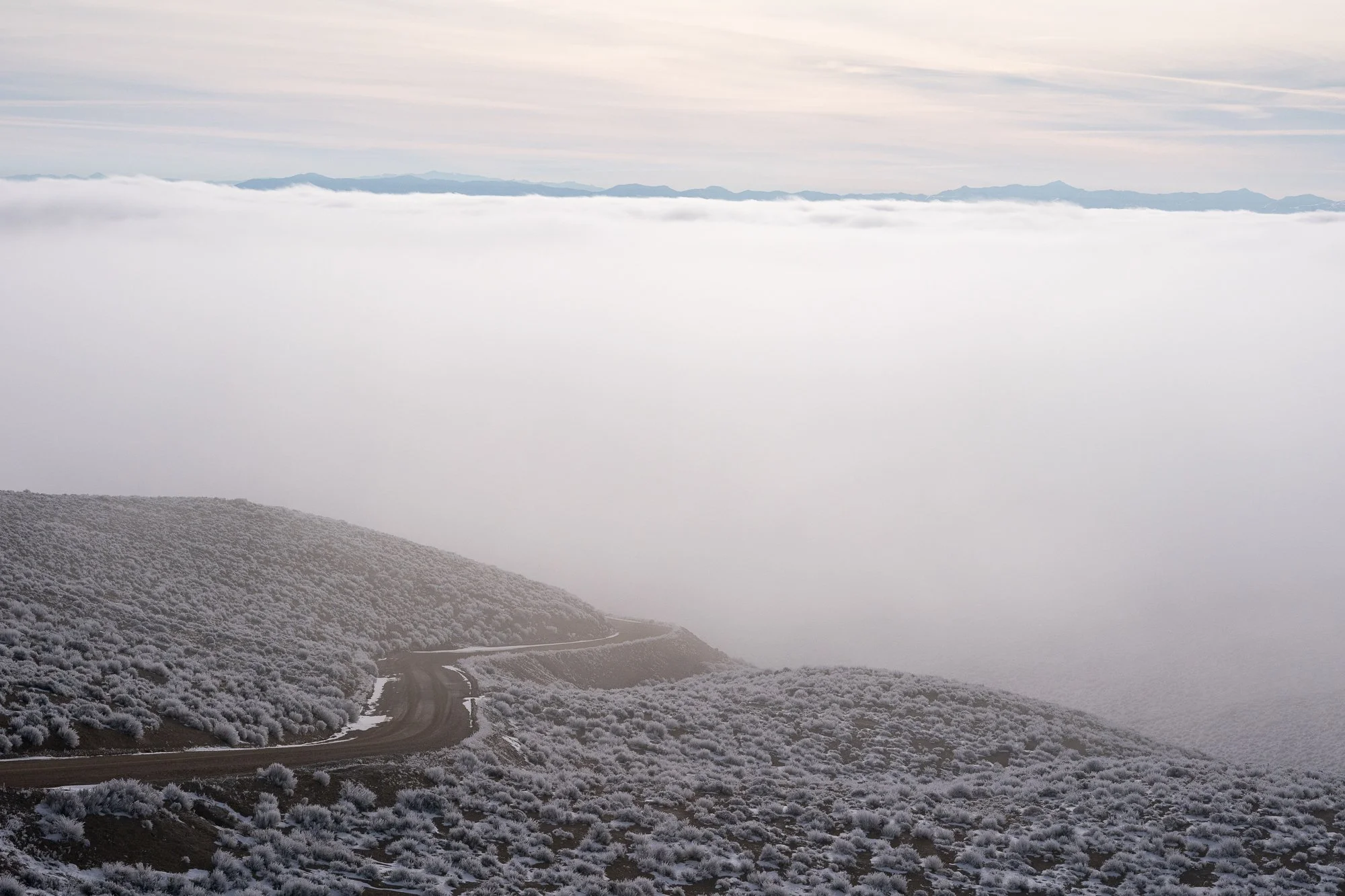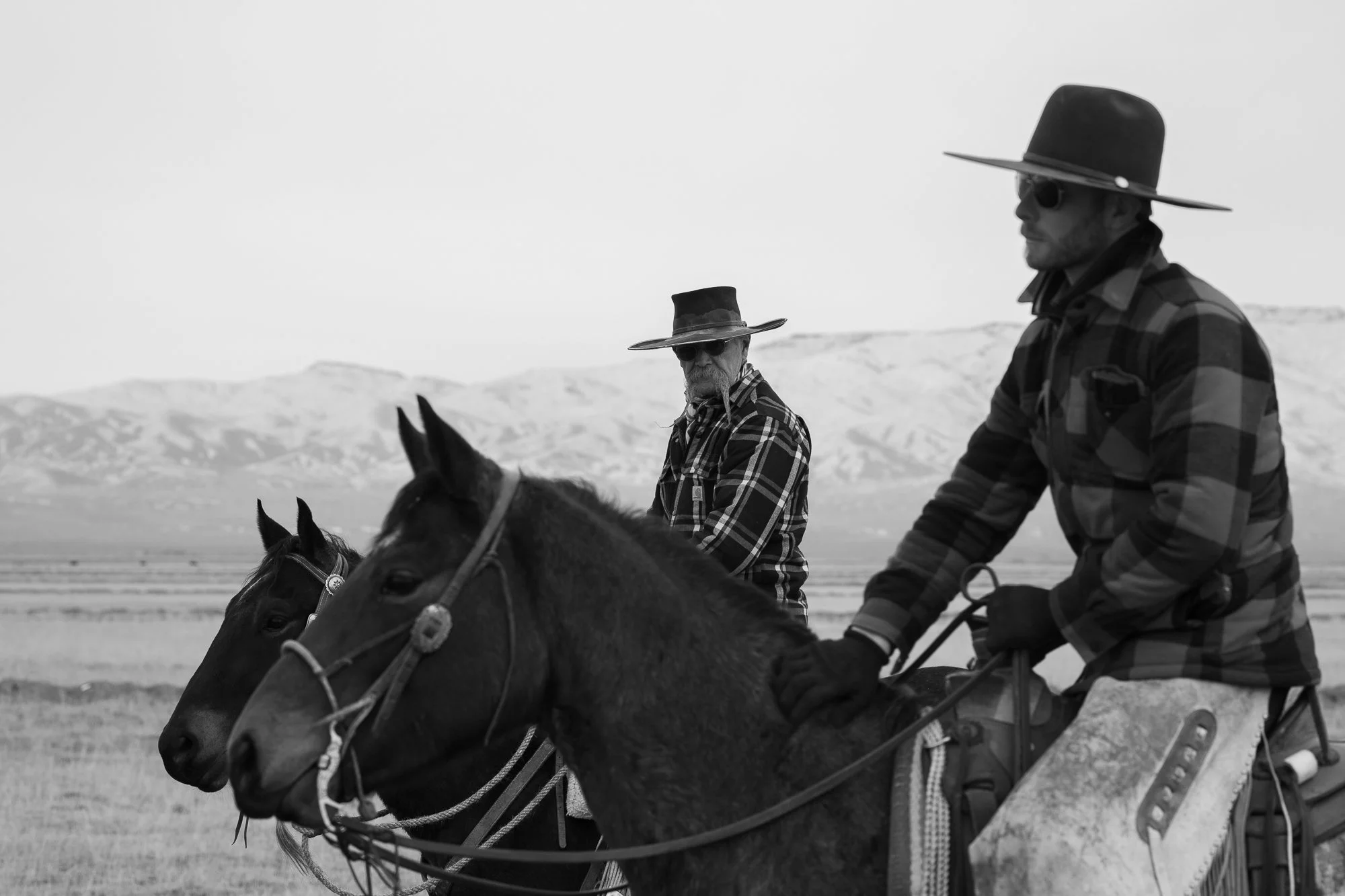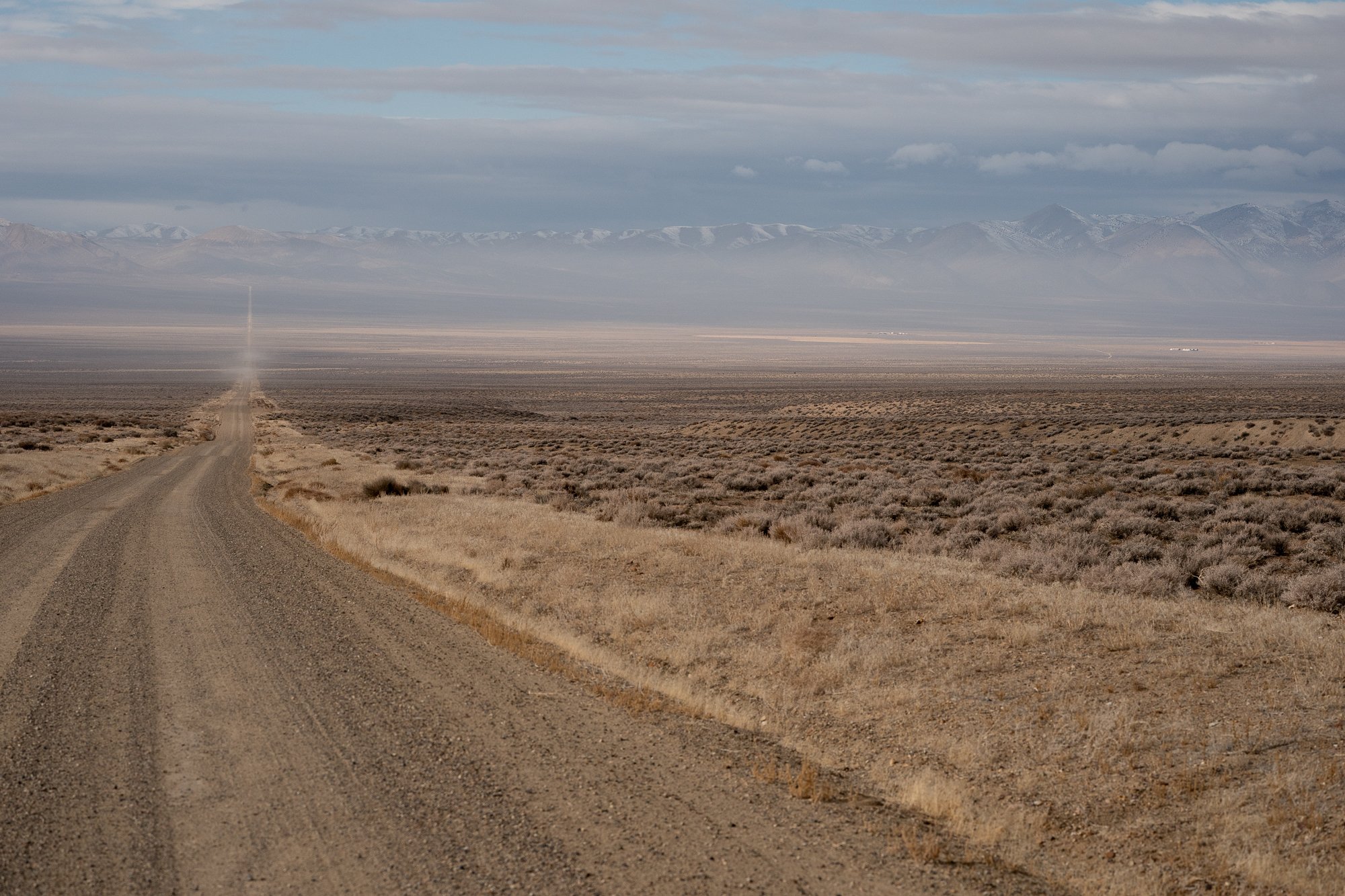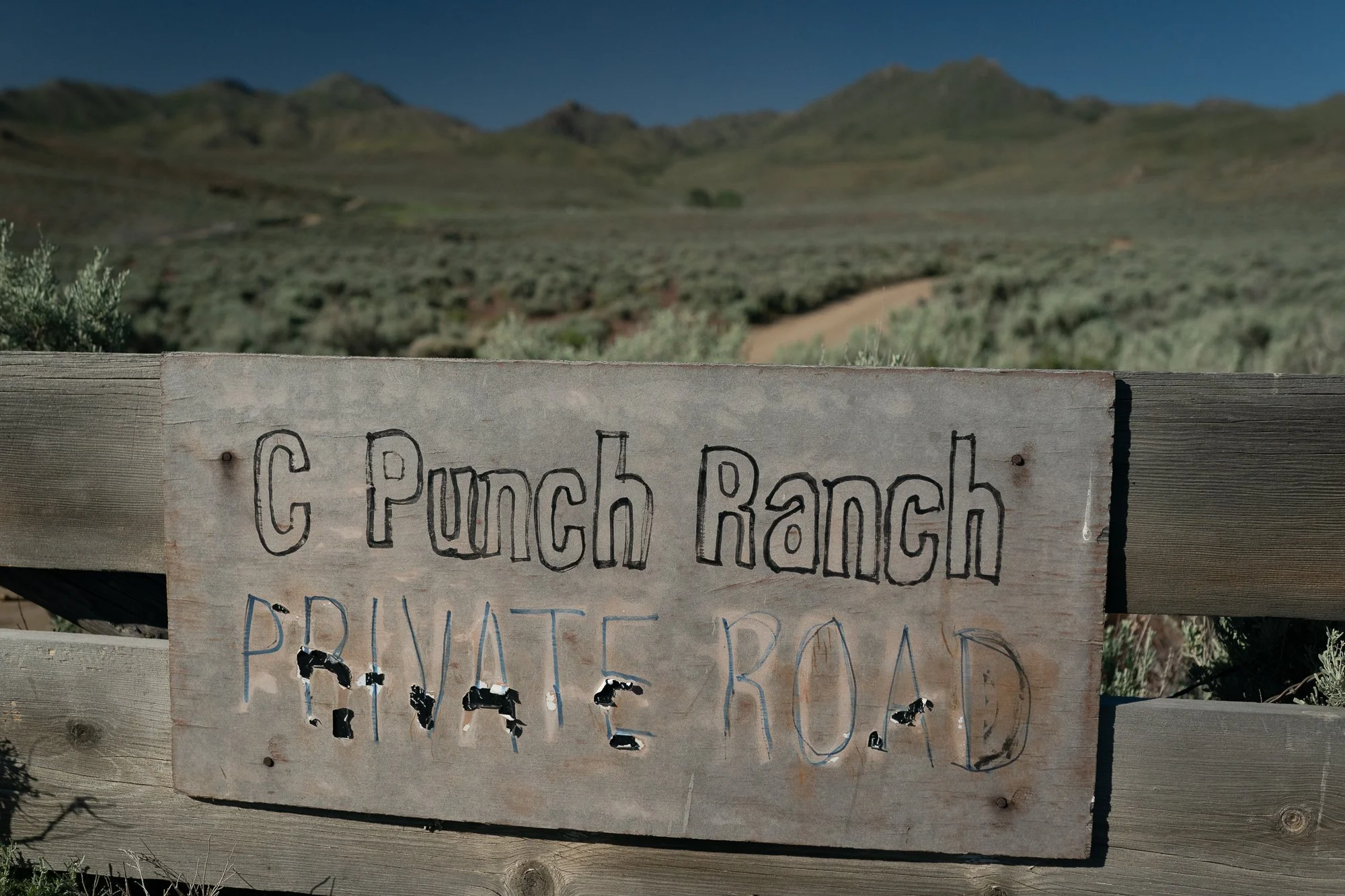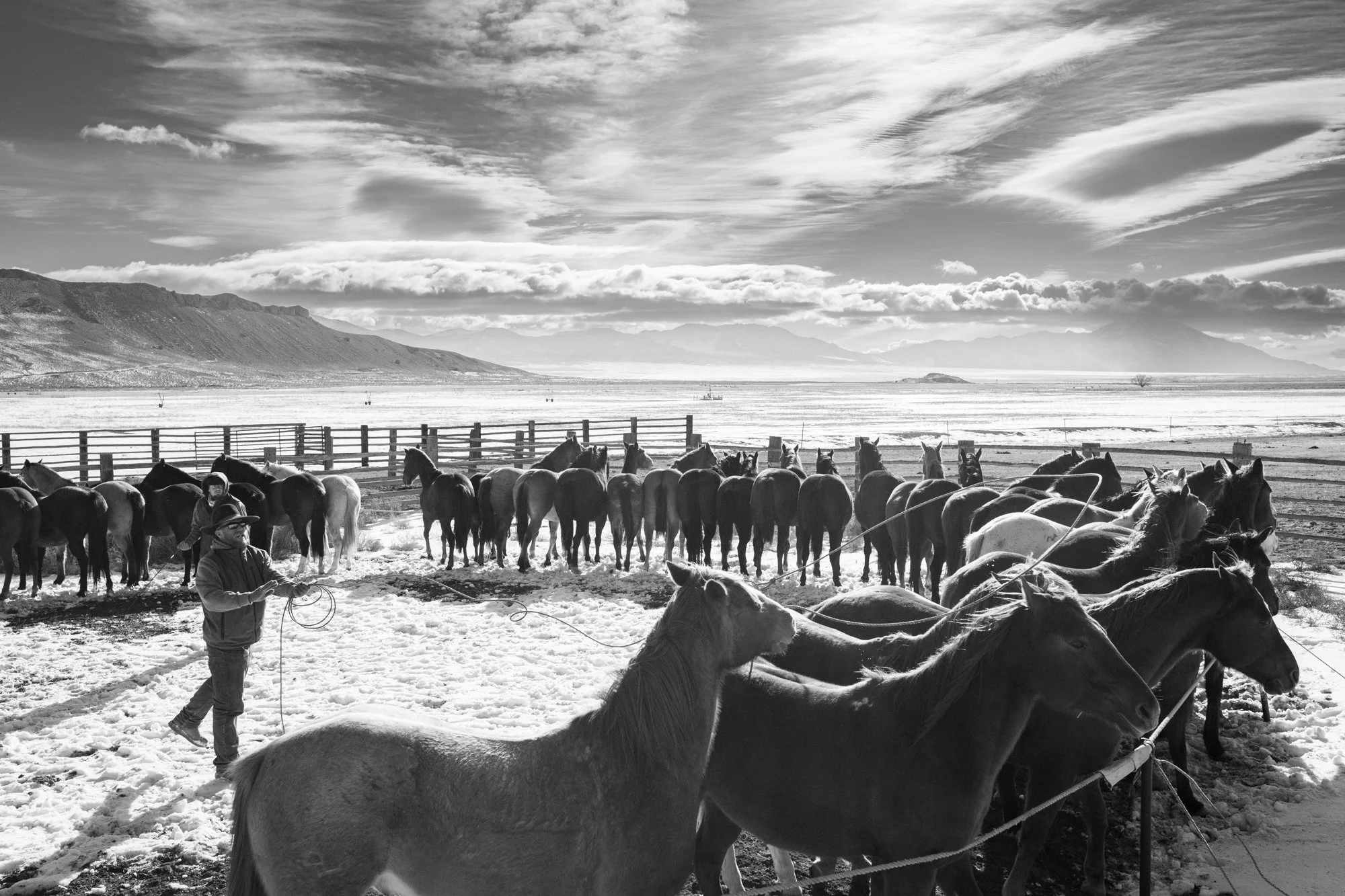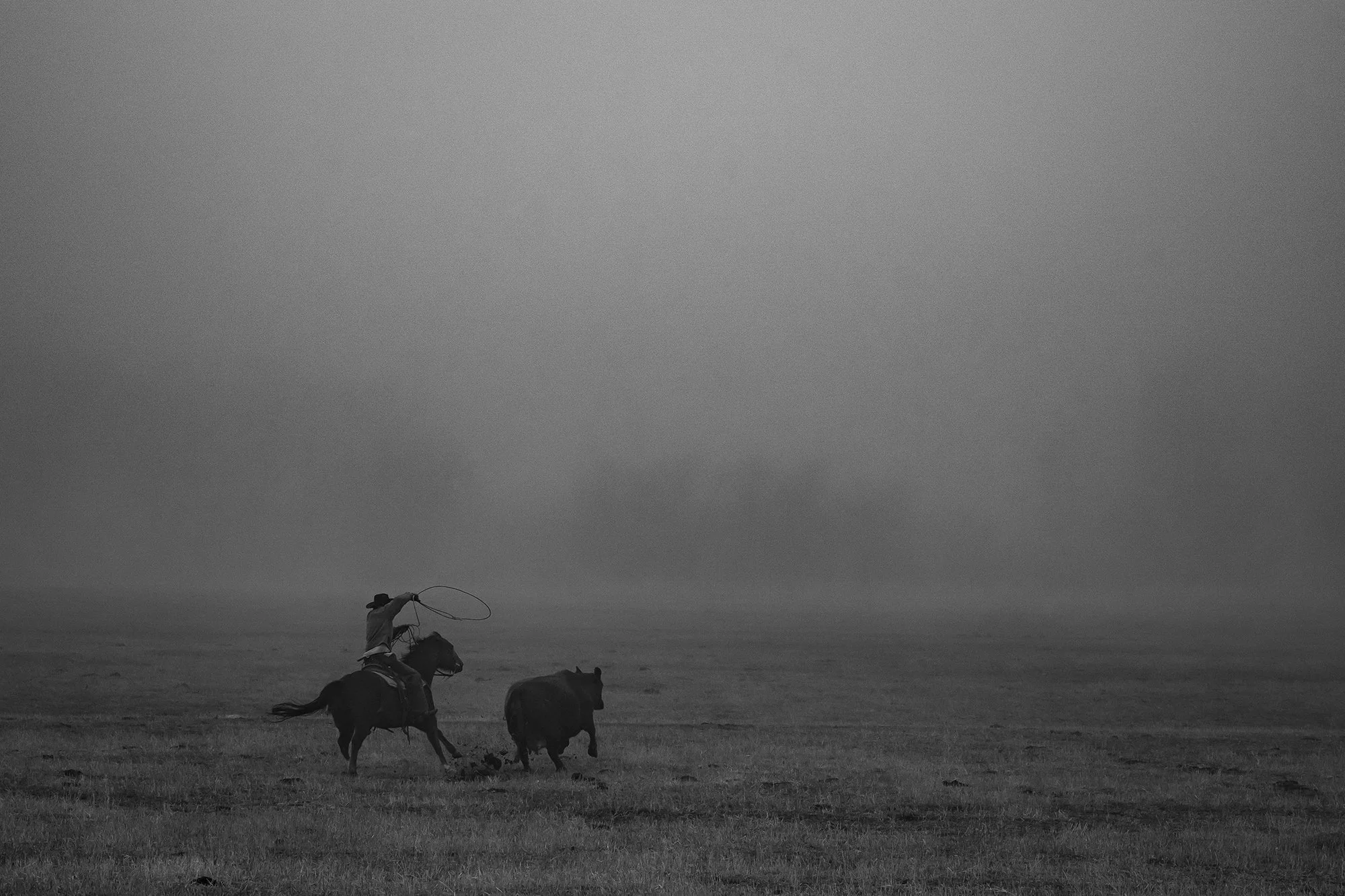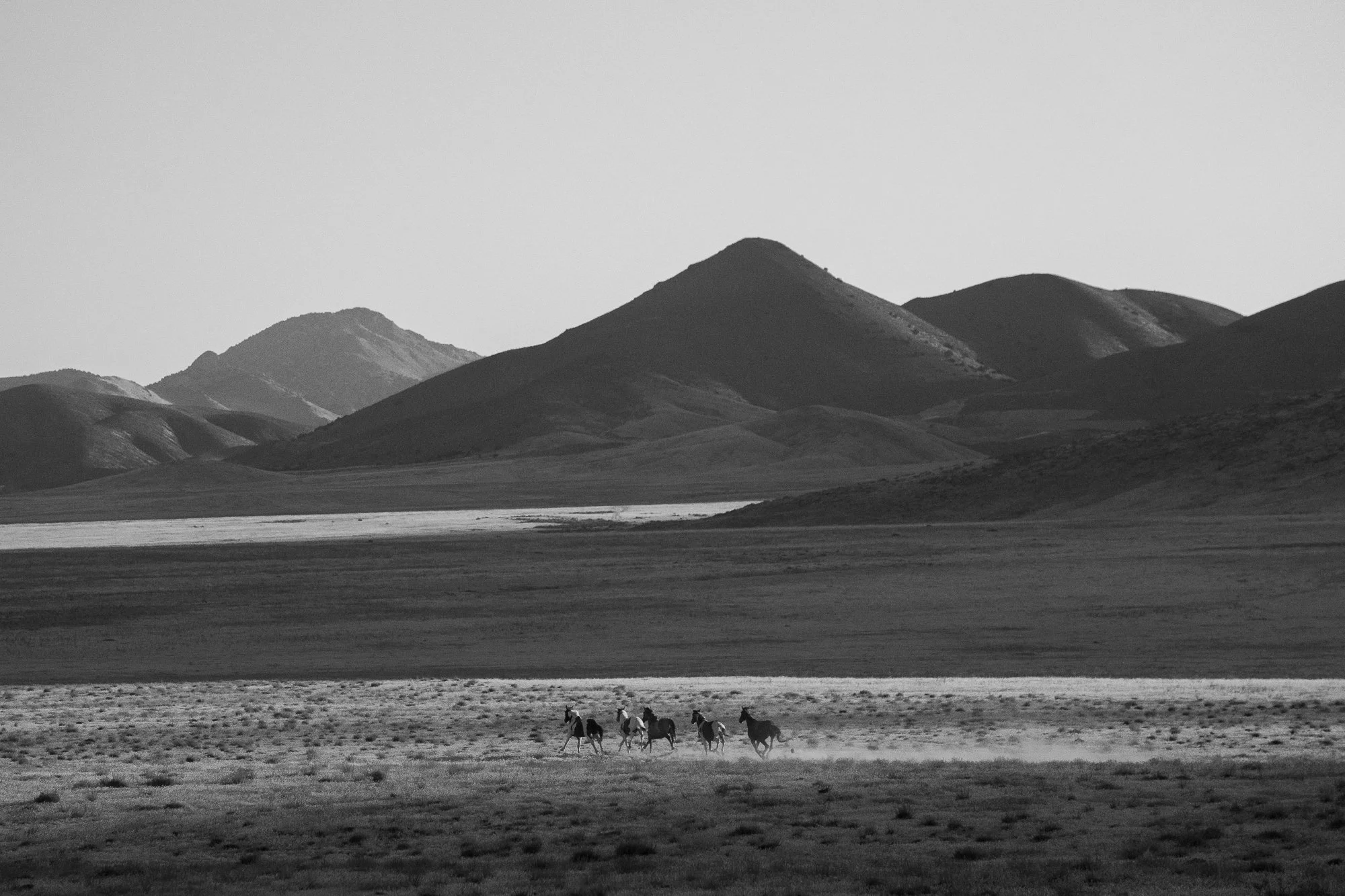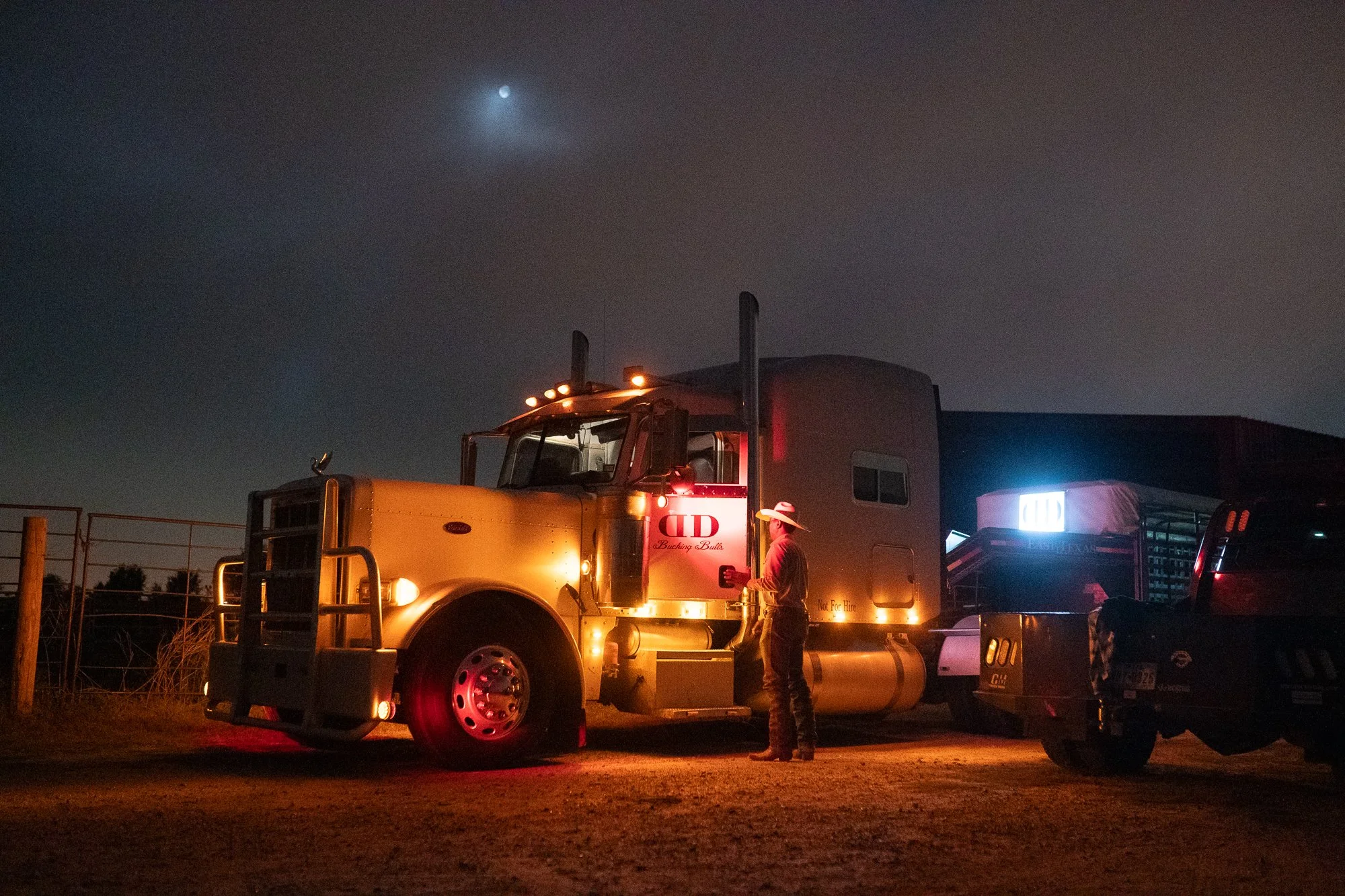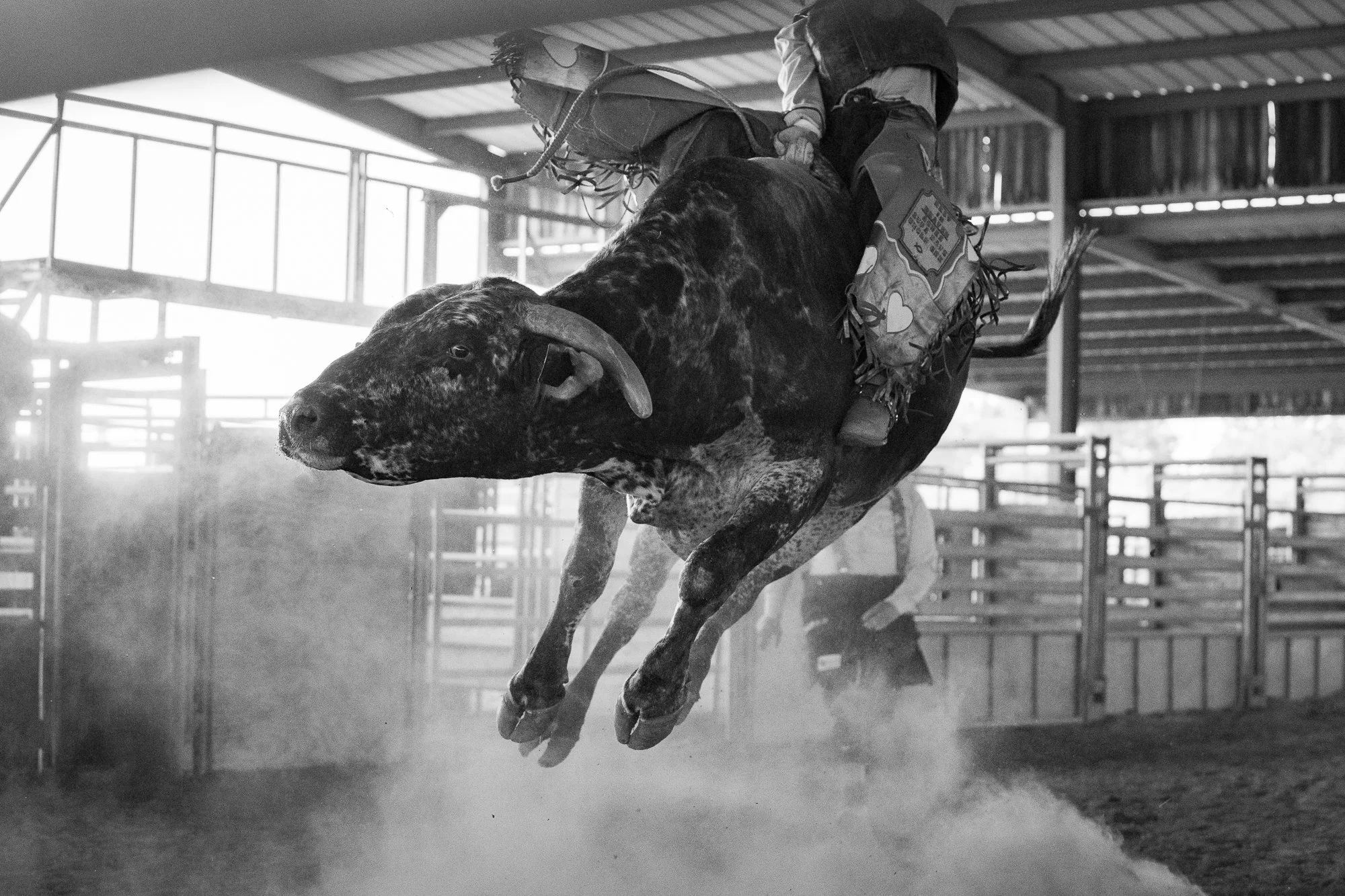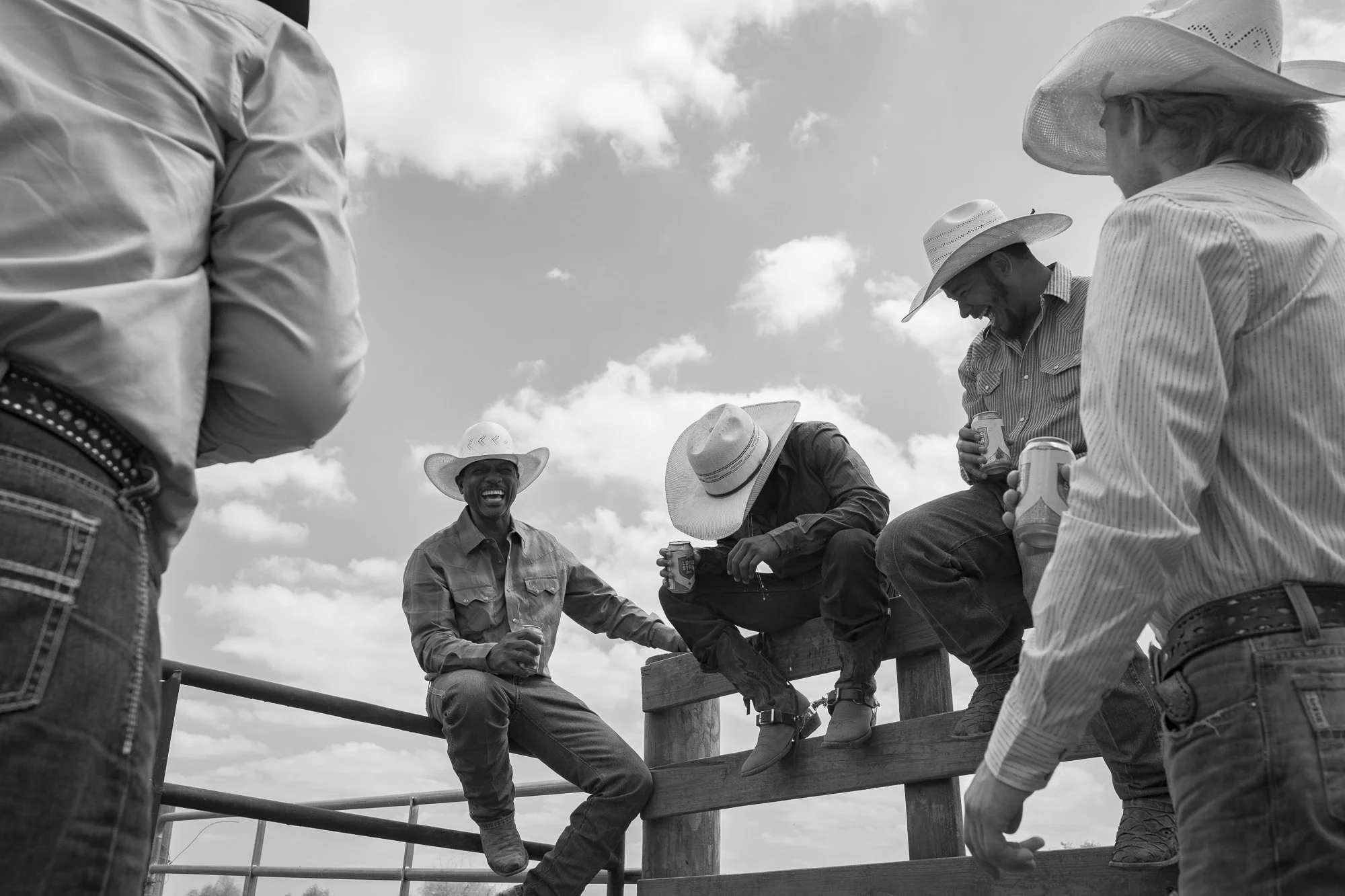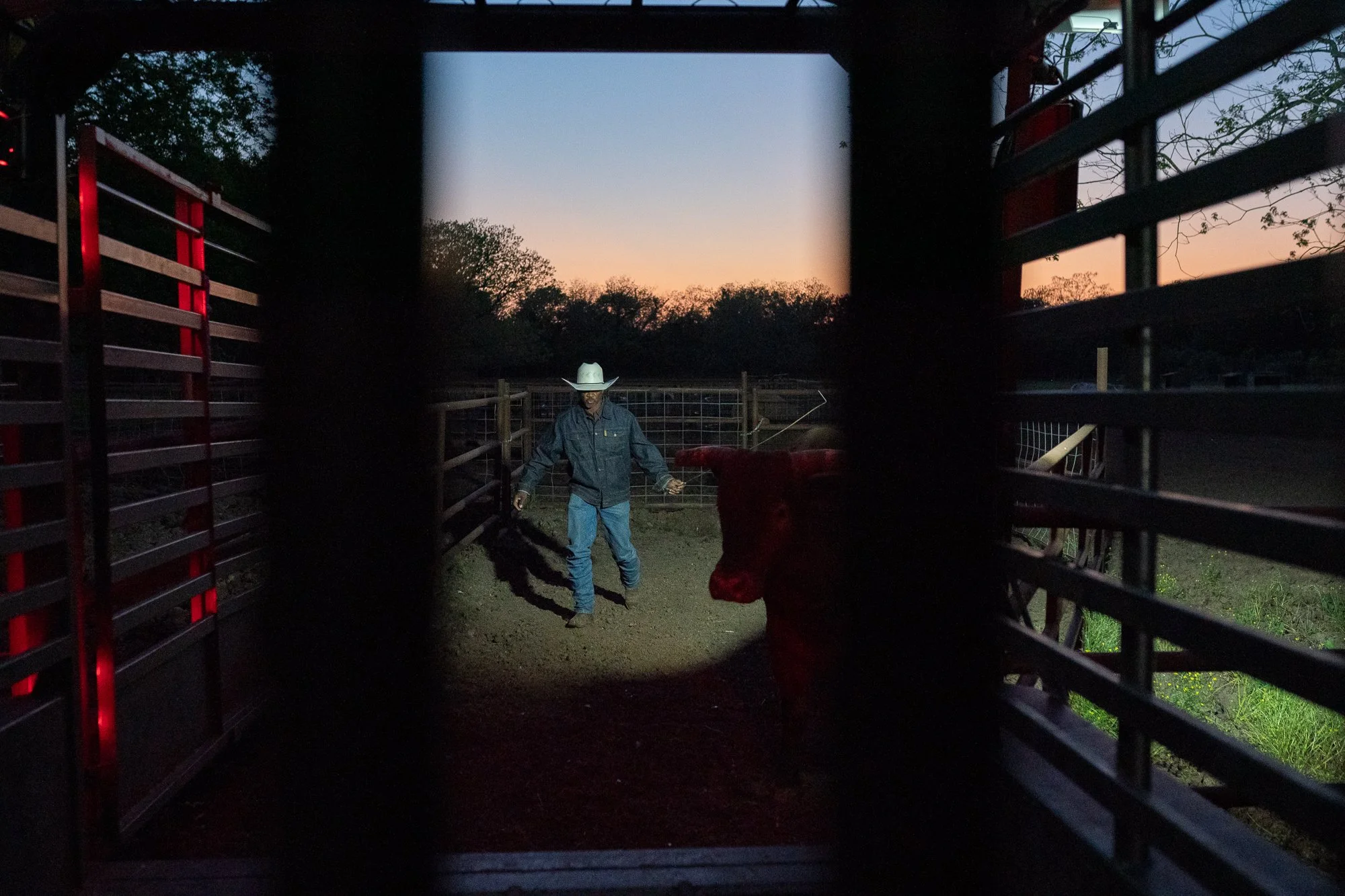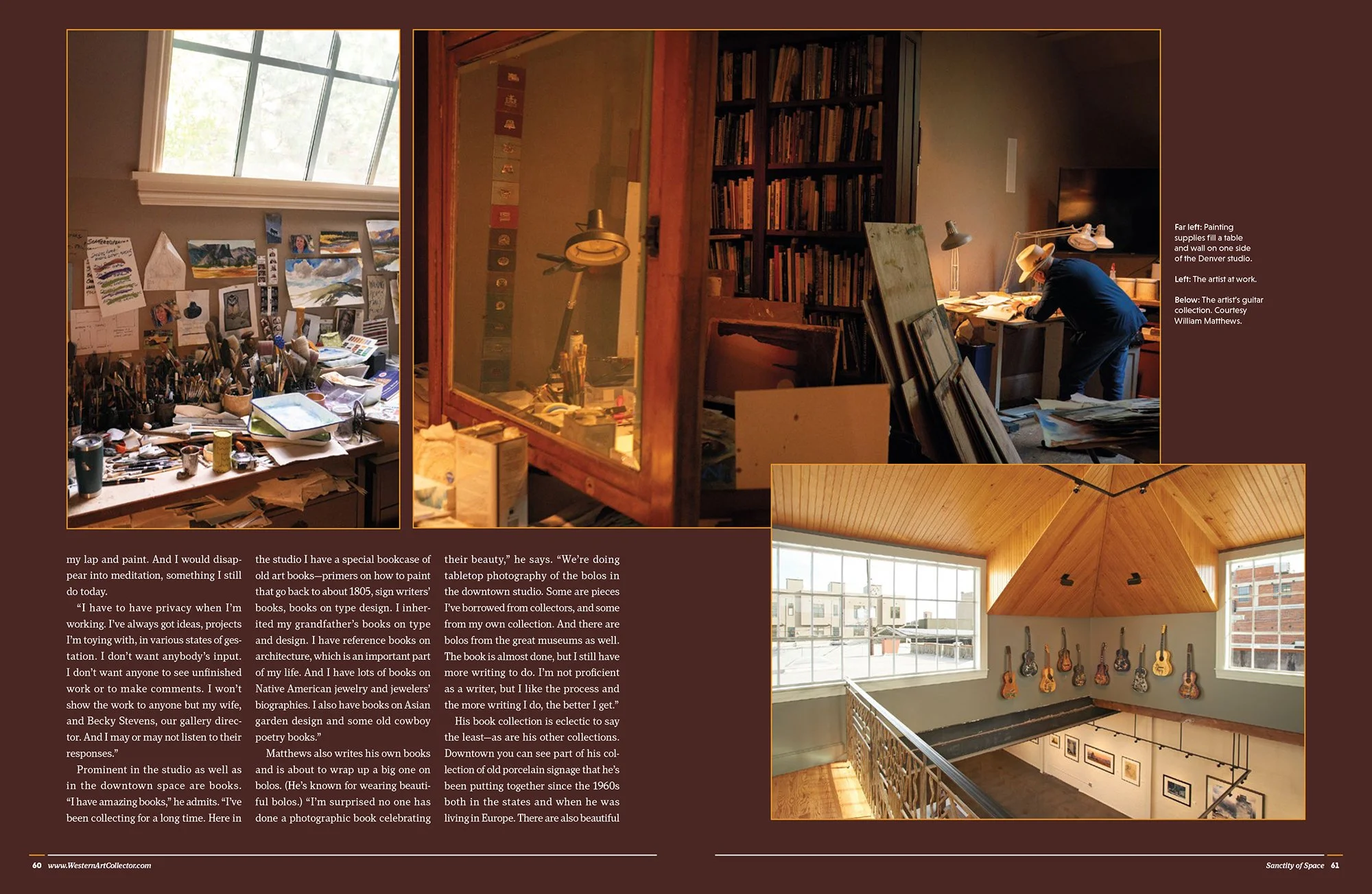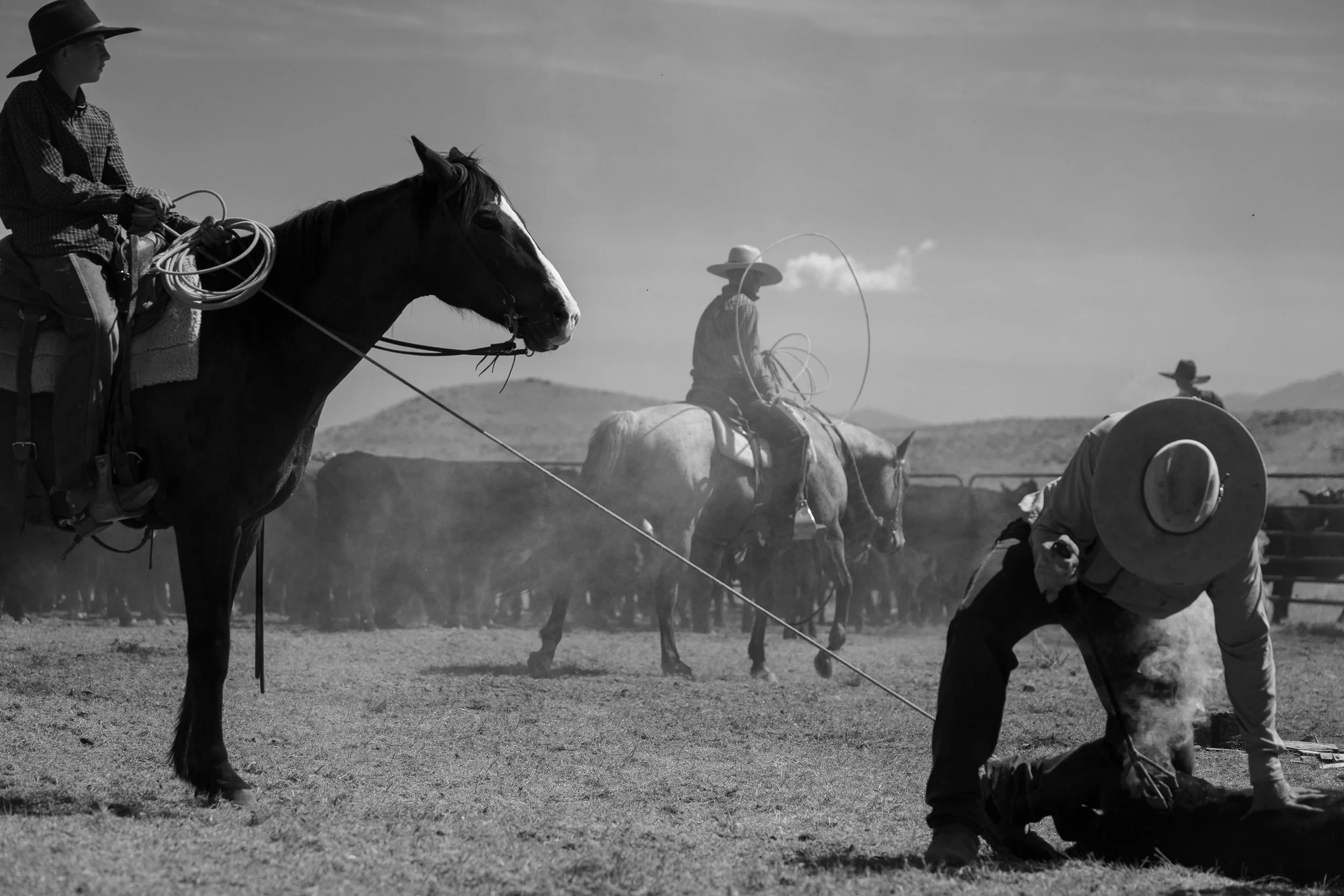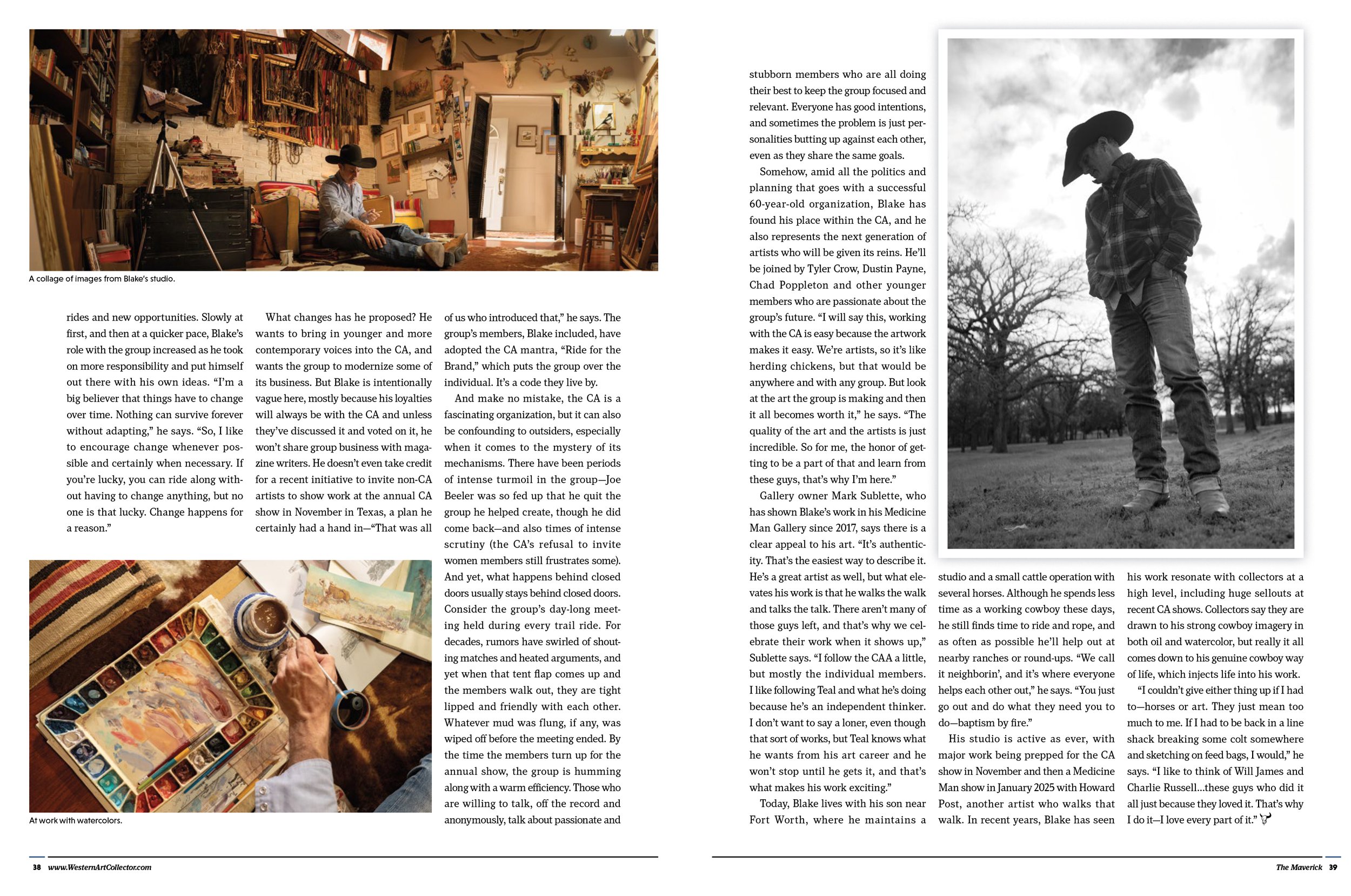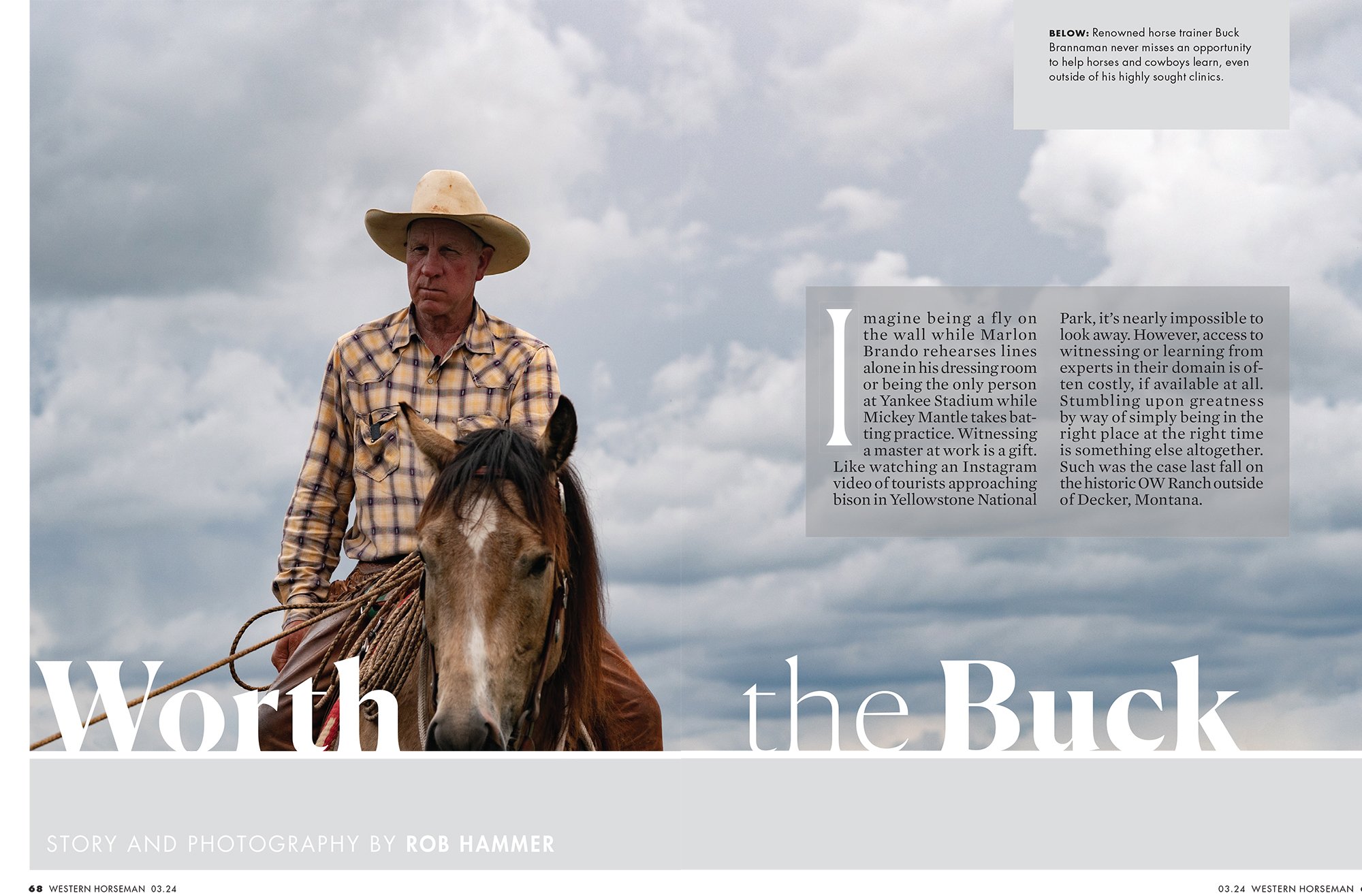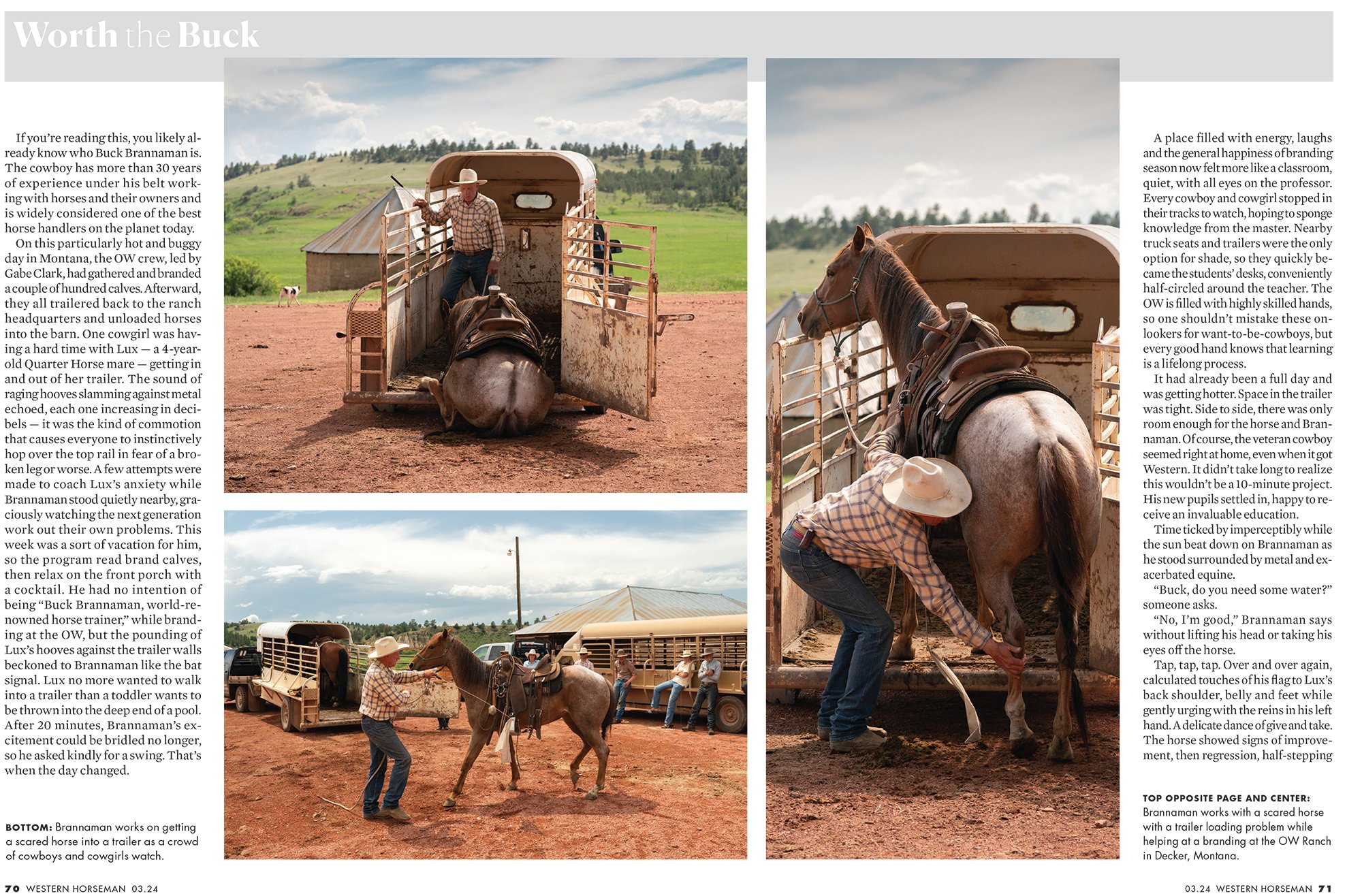C-Punch Ranch, Nevada – Working Cowboys of the Great Basin
The C-Punch Ranch sits deep in the high desert of northern Nevada, a place where the road narrows, cell service disappears, and the landscape stretches out far beyond what most people ever get to see. I’ve photographed a lot of working cowboys across the West over the years, but the C-Punch has a way of staying with you. It’s a ranch of unthinkable size (1.8 million acres), resilient horses, and buckaroo traditions that haven’t been watered down by time or convenience. Everything about it feels rooted in the old ways—not out of nostalgia, but because it’s the only thing that works in a place that big!
This is a photographic look inside one of the Great Basin’s most respected outfits.
A Historic Ranch in the Heart of the Great Basin
The Great Basin is unlike anywhere else in the country. It’s wide, harsh, and rugged in a way that demands a certain type of cowboy—someone who’s as comfortable riding an endless trot as they are roping in big country. The C-Punch Ranch fits squarely into that tradition. It’s one of the longstanding outfits that helped define the buckaroo style: rawhide gear, flashy bits, big loops, Vaquero-influenced horsemanship, and an unwavering focus on stockmanship.
Ranches in this region operate across huge expanses of desert and sagebrush. The land is open, unforgiving, and absolutely beautiful. Cattle graze for miles. Horses cover ground that would break most people. And the cowboys who work here carry forward a culture that remains largely unseen by the outside world.
Photographing at the C-Punch is stepping into that rhythm—into a world where the work is real and the traditions matter.
Photographing Life on the C-Punch Ranch
My time on the ranch always starts before sunrise. The crew saddles in the pale light, horses blowing steam into the morning air. Coffee is hot, conversation is short, and the day begins quickly. Once you ride out onto the range, time moves differently. The distances feel enormous, and the silence is broken only by bawling cows, wind, and wild horses playing in the distance.
I photograph quietly. I don’t stage anything, and I don’t ask people to perform. The work is honest as it is, and the best photographs come from letting the day unfold as it always does.
Some days are spent gathering cattle across rough desert country. Other days are branding days—dust, smoke, ropes, and a kind of controlled chaos that resolves into teamwork. No two days are the same, and that’s the beauty of working ranches like the C-Punch.
Gathering Cattle Across the Nevada Desert
Cattle work in the Great Basin means covering many many many miles—sometimes more before lunch than most people drive in a week. The C-Punch cowboys ride out into sagebrush flats and rocky hillsides, spreading wide across the desert to bring cattle together. Horses work hard out there. Cowboys do too.
The landscape is big enough that you often see a single rider silhouetted against an entire mountain range. Dust hangs low. Light shifts quickly. And the relationships between riders and horses become clear in those long, quiet hours.
These are some of my favorite moments to photograph—honest, solitary, and rooted in the environment.
Branding on the C-Punch – Dust, Smoke, and Traditions That Don’t Change
Branding on the C-Punch is high desert ranching at its most iconic. There’s smoke, dust, noise, and movement from every direction. Cowboys rope calves from horseback. Ground crew works quickly. Horses stand steady in the swirl of dust. It’s a fast, physical kind of work, but everyone knows their place and the flow stays remarkably smooth.
What stands out most is how much horsemanship is involved. Everything is done with a rope, a horse, and practiced timing. It’s the kind of branding that defines buckaroo culture—the kind rarely seen by the general public.
Photographically, it’s a gift: sun slicing through dust, silhouettes in motion, rawhide ropes swinging through the air, and the steam rising off a fresh brand.
Details That Define a Buckaroo Outfit
You can learn a lot about a ranch by looking at the details. The worn bell stirrups marked by years of use, Garcia bits, rough out saddles, flat hats, rawhide reins that have passed through the hands of several cowboys. Spurs shaped by tradition, not fashion.
These details tell the story just as much as the wide landscapes or branding scenes. They show the craftsmanship, the lifestyle, and the individuality of each rider. They’re reminders that buckaroo culture isn’t just about cattle work—it’s about a way of life built over generations.
A Ranch Where Tradition Still Matters
The C-Punch Ranch is one of those rare places where the past and present meet naturally. The work is still done horseback. Young cowboys learn from seasoned hands. Horses are respected. Gear is functional, not decorative. And there is pride—quiet, deep pride—in doing the job well.
In a world moving fast and often in the opposite direction of tradition, the C-Punch remains steady. That’s what makes documenting it so meaningful. It isn’t a reenactment. It isn’t a version cleaned up for guests or cameras. It’s the real thing, practiced every day because it’s how the work gets done.
Related Ranches of the Great Basin
If you’re interested in this story, you may also like my photographs from:
Spanish Ranch, Nevada — One of the most historic cattle ranches in northern Nevada.
Fine Art Prints & Licensing
Images from the C-Punch Ranch are available as fine art prints.
Licensing is also available for editorial, commercial, and documentary projects.
To inquire about prints or licensing, please contact me here - rob@robhammerphotography
Closing Thoughts
Every time I photograph the C-Punch Ranch, I leave with a deeper respect for the cowboys who ride there. The land is tough. The work is tougher. But there’s a sense of pride, purpose, and tradition that you won’t find anywhere else.
The Great Basin is a world unto itself—huge, harsh, and beautiful—and the C-Punch is one of the ranches that keeps its culture alive. My hope is that these photographs help preserve a small piece of that legacy.
Clouds sweep over the mountain peaks that border the C-Punch Ranch, a reminder of the scale and isolation of Nevada’s Great Basin.
A quiet moment at the barn as a cowboy saddles his horse before heading out onto the winter range at the C-Punch Ranch.
A cowboy pushes cattle across frozen ground at the C-Punch Ranch, the quiet rhythm of winter work in northern Nevada.
A buckaroo swings a loop from horseback during cattle work at the C-Punch Ranch, where roping is still done the traditional Great Basin way.
A miniature metal roping dummy sits on the bunkhouse table, used by young buckaroos learning the craft at the C-Punch Ranch.
A cowboy drives cattle beneath a sweeping sky at the C-Punch Ranch, framed by the rugged mountains of northern Nevada.
A close look at worn chinks and a working hand during branding at the C-Punch Ranch—details that define the buckaroo tradition.
A lone rider crosses the valley at dawn as the first light hits the mountains surrounding the C-Punch Ranch.
A cowboy threads his horse through a dense herd of cattle at the C-Punch Ranch, checking animals before the day's work begins.
A fleeting glimpse of a saddle horse moving through the corrals during morning work at the C-Punch Ranch.
A distant cowboy rides along a sunlit hillside near the C-Punch Ranch, dwarfed by the scale and shadows of the Great Basin.
A wide view of the high desert near the C-Punch Ranch in northern Nevada, where sagebrush flats meet distant mountains across the Great Basin.
A close look at the traditional buckaroo gear used at the C-Punch Ranch, from the rawhide reins to the well-worn saddle built for long days on the desert range.
Riding through the corrals at the C-Punch Ranch, a cowboy prepares to move cattle after a cold overnight storm.
Anvil and ropes at the C-Punch Ranch, showing the worn metal and dust of daily work during branding season.
A cowboy works a young horse in the round pen at the C-Punch Ranch, a daily part of keeping saddle horses sharp through the winter.
A thick layer of winter fog settles across the Great Basin near the C-Punch Ranch, leaving only the Ruby Mountains visible above the cloud line.
A cow skull and weathered Western painting hang on the wood-paneled wall of the C-Punch Ranch bunkhouse—a small glimpse into the everyday life of a historic Nevada outfit.
A seasoned buckaroo waits by the chutes at the C-Punch Ranch, preparing for another day of winter cattle work.
A cowboy rides the fence line near the C-Punch Ranch, a daily task in the wide-open winter desert of northern Nevada.
ranch dog sneaks a makeshift lunch beside the horse trailer — a small slice of daily life at the C-Punch.
Cowboys at the C-Punch Ranch pause on horseback as morning light hits the snow-covered mountains of the Great Basin.
A dirt road cuts across the Great Basin near the C-Punch Ranch, capturing the vast, quiet space of Nevada’s high desert.
A single rider crosses the open winter range—one of the most iconic sights in the Great Basin buckaroo tradition.
A cowboy climbs a livestock trailer at the C-Punch Ranch as cattle are prepared for shipping across the winter range.
The hand-painted sign at the entrance to the C-Punch Ranch, marking the start of a long dirt road that winds deep into the sagebrush country of northern Nevada.



